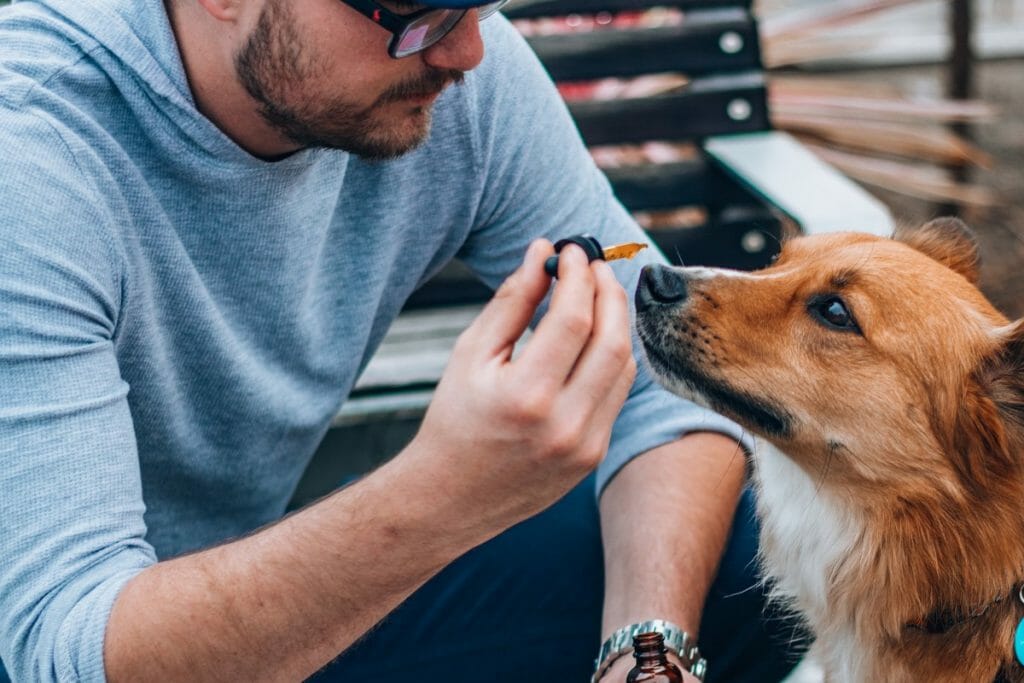Do you hear your dog barking when you close the door behind you before going to work? Do you see him frantically circling around you when you are putting on your shoes to go out? Perhaps you have a dog that does not want to be left alone.
Separation anxiety in dogs is an increasingly common behavioural disorder that occurs when a dog is left alone or separated from its owner. This problem can cause a range of symptoms including anxiety, fear, panic, excessive barking, destructive behaviour and more.
his type of anxiety can affect dogs of all breeds and ages and is often associated with a lack of socialisation or early separation from the mother or siblings. In addition, a change in daily routine, abandonment as a child or the prolonged absence of the owner can increase the likelihood of the dog developing this disorder.
If not treated properly, separation anxiety can cause considerable stress and discomfort to both dog and owner, leading to a negative impact on the quality of life of both.Fortunately, there are several strategies owners can adopt to manage separation anxiety in dogs and to help their pets feel safer and happier when left alone.
What can cause anxiety in dogs?
Just as in humans, anxiety in dogs can be caused by several reasons.
Some of the most common causes of anxiety in dogs include:
- Separation: A dog that suffers from loneliness is so because it is left alone for many hours a day or because it fears that this will happen;
- Loud noises: loud noises such as thunderstorms, fireworks and heavy traffic, especially when the dog is alone;
- Insufficient socialisation: dogs that have not been properly introduced to society may develop anxiety in the presence of other people or animals;
- Changes in the environment: dogs can become anxious when there are changes in the environment such as a move or house renovation;
- Traumatic experiences: Dogs that have been abused, have already been abandoned or have been involved in accidents may be more prone to develop the disorder;
- Health problems: anxiety in dogs can also be caused by diseases or other disorders.
If you see that your dog is behaving differently from normal or that he cannot handle certain situations, you should dig deeper to understand the nature of his malaise. Let’s see how to recognise separation anxiety in dogs.

How to tell if a dog suffers from separation anxiety?
There are some distinctive signs of an anxious dog that you can monitor to see if this is indeed the problem your pet suffers from.
Some of these alarm bells include:
- Crying or barking when you are out of the house: as soon as you close the door you might hear crying and yelping as you leave, neighbours might report it to you or you might see it on the cameras if you have them inside the house;
- Destroying objects or biting furniture: your dog may destroy objects or bite furniture when you are away from home;
- Doing its business indoors: if your dog does its business indoors when you are out, even if it is normally trained to go outside;
- Being overly happy when the owner comes home: If your dog seems overly enthusiastic when you come home;
- Follow the owner everywhere: If your dog follows you everywhere when you are at home, either under normal conditions or if you return after being away for several hours;
- Loss of appetite: if your dog loses its appetite when you are away from home or refuses to eat even when you return.
- il tuo cane perde l’appetito quando sei fuori casa o si rifiuta di mangiare anche quando rientri.
Thus, one or more of these symptoms could be signs of separation anxiety in the dog. In such a situation you should not take your pet’s discomfort lightly because it could turn into a real illness with physical as well as mental consequences.
How to calm a dog’s anxiety?
How to help a dog overcome separation anxiety? There are several ways to calm down a dog that does not want to be away from its owner. Before moving on to the actual therapies, which we will discuss in a moment, you can follow some tips that can make a difference in your dog’s life:
- Don’t leave him alone for too many hours: if you have to be away for work or other reasons, try to leave your dog toys with which he can have fun and distraction such as a bone to bite or a puppet;
- Establish a routine of walks, games and meals: dogs need regularity and predictability to feel safe and relaxed, so try to respect your pet’s schedule and habits;
- Maintain a calm and relaxed environment around the dog: be careful not to create stressful or anxious situations that could worsen the situation;
- Provide a safe and comfortable place: a place where the dog can go to rest and feel safe can be a basket, a cage or a room where it can retreat;
- Physical and mental exercise with the dog: physical activity helps relieve stress and release endorphins, the feel-good chemicals; stimulating the dog’s brain with games of intelligence, hide-and-seek or searching for objects helps him focus on something positive and fun;
- Massaging the dog gently: physical contact is very important for dogs, massaging the head and bottom helps them to relax and feel loved and protected.
These are just some of the ways to calm a dog’s anxiety. Always remember that your dog needs your support and understanding to overcome his fears and live happily by your side.
How to deal with an anxious dog?
In addition to these small strategies, how can you act to alleviate separation anxiety in your dog? You are his master, his reference point. The way you deal with him makes all the difference.
Here are some suggestions for the best possible behaviour based on the situation:
- Offer emotional support: your dog needs to feel your affection and understanding when he is anxious;
- Give your dog plenty of attention and comfort when he is with you: pet him, talk to him in a soft, soothing voice and play with him;
- Avoid strong punishments: do not hit him, scold him or punish him for his behaviour either verbally or with gestures;
- Don’t reassure him when he is anxious: don’t give him a reward when he is in the middle of an anxiety or panic attack because he might interpret it as a reward just because he behaved like that.
So what should I do if the dog does not want me to go out? You have to be gentle but firm. Don’t take pity on him but don’t be too harsh either. You have to get your four-legged friend used to being alone step by step, without making him feel guilty about this attitude but without encouraging him to continue.
How to accustom a dog to detachment?
In addition to the strategies we have seen so far, you can help yourself with actual therapies that can treat separation anxiety in dogs. Be careful though, one technique does not exclude the other. Do not rely solely on a treatment or a change of habits.
It is the combination of all these good practices that can help your dog to have a happier life: treatments may give results in the short term, but healthy habits allow you to maintain well-being for a long time, even when you stop treatment.
CBD
Separation anxiety, how to treat it? CBD, the extended name ‘cannabidiol’, is a natural substance found in the hemp plant that can interact with the dog’s endocannabinoid system and calm anxiety naturally, instilling a sense of peace and tranquillity.
If you want to use CBD to help your dog overcome detachment and separation anxiety, you can choose a high-quality CBD oil that is very practical and versatile. In addition, real dog products do not contain THC, the sense-altering ingredient in marijuana, because animals are unable to synthesise it.
Depending on weight, breed and severity of anxiety, there is a CBD dosage calculation for dogs that we strongly suggest you check before starting therapy. If you want to make sure you don’t make a mistake, always ask your vet for advice as well, especially if your dog is already undergoing drug treatment.
Administer CBD to the dog before separation by dripping it on his favourite treat or in a bowl with food. Then monitor the dog’s behaviour and adjust the dose over time if necessary.

Professional training
A professional dog trainer can be an effective solution to help your dog overcome separation and separation anxiety, but of course it has to be done with judgement and competence.
The professional trainer can:
- Assess the dog’s level of anxiety and its causes;
- Propose a customised training plan based on behavioural psychotherapy;
- Teach the owner training techniques and good practices to follow;
- Monitor the dog’s progress and adjust the training plan if necessary.
When choosing a professional trainer, always remember to check their qualifications, experience, working methods and references. You can also ask your vet or other dog owners to recommend a reliable and competent trainer. Choosing the right person is crucial for progress.
Sound therapy
Sound therapy consists of having the dog listen to relaxing or masking sounds, such as classical music, nature sounds, white noise or recordings of human voices, to reduce stress and fear caused by external noise or silence.
Such therapy can be helpful in calming the dog and distracting it from noises that might trigger its anxiety such as a thunderstorm, fireworks or sirens. However, it is not a definitive cure for separation anxiety and has to be supplemented with the other strategies we have already seen such as behavioural training, exercise, mental activities and natural remedies.
However, if you want to try this route to treat anxiety, you can:
- Choose a sound suitable for the dog, which is relaxing and not too loud;
- Have the dog listen to the sound when it is quiet and in your company, to get it used to it and associate it with a positive situation;
- Gradually increase the duration and volume of the sound until the desired level is reached;
- Make the dog listen to the sound when left alone to create a comfortable and familiar environment;
- Monitor the dog’s behaviour and adjust the sound if necessary.
You can also use equipment specially designed to emit relaxing sounds.
Cognitive-behavioural therapy
Cognitive-behavioural therapy is one of the most effective therapies to help dogs overcome separation anxiety. This treatment consists of modifying the dog’s thoughts and behaviour that are at the root of his anxiety through desensitisation and counterconditioning techniques.
Desensitisation is the technique of accustoming the dog to separation in a gradual and progressive manner, starting with short absences and increasing the duration and frequency as the dog becomes calmer.
Counterconditioning, on the other hand, consists in having the dog associate separation with something positive such as a game, a reward or a reassuring word.
Cognitive-behavioural therapy requires time, patience and perseverance on the part of the owner and the dog. To implement it, you can turn to a professional trainer or a veterinary behaviourist for appropriate guidance and support.
This type of therapy can also be supplemented with natural or pharmacological remedies to relieve your pet’s stress and anxiety.
Help your dog manage and relieve anxiety
In light of everything we have said so far, separation anxiety in dogs is a common problem that can cause stress and discomfort for both pet and owner. So don’t worry, there are several strategies and products that can help manage the disorder and improve your four-legged friend’s quality of life.
Among the many options available, CBD for dogs has proven particularly effective in reducing anxiety and nervousness without causing unwanted side effects. Thanks to the natural and therapeutic properties of CBD, more and more dog owners are discovering the benefits of this product to improve their pets’ mental and physical health.
If you are looking for a safe and effective way to relieve your dog’s separation anxiety, we recommend you try Maria CBD Oil products for dogs.
Thanks to their high quality and great care for the health of your four-legged friends, these products can offer a valuable aid in improving the quality of life of your pets.
Visit the online shop now and make their life experience more serene and happy.
 Contact us
Contact us 






